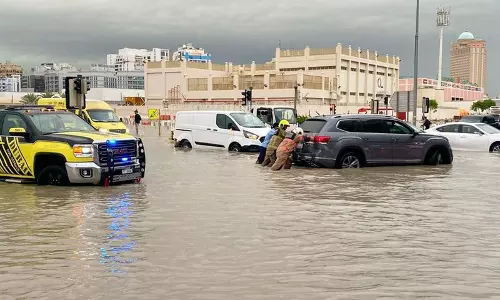
EVs in Central budget
text_fieldsThe emphasis given to electronic vehicles (EV) in the union budget presented in parliament on 5 July is significant, and it contains proposals that underlines the policy of boosting the production and use of EVs. They include reduction of the GST rate for EVs from 12 to five per cent, removal of import duty on spare parts and income tax deduction of interest upto Rs 1.5 lakh on loans for purchasing EVs.
The government policy of incentivising EVs dates back to 1 April 2015 when the central government formulated a plan called Faster Adoption and Manufacturing of Hybrid and Electric Vehicles in India (FRAME). This programme has been allocated RS 10,000 Cr in the new budget. It is for the first time that such a comprehensive package of programmes has been included in a budget for promoting EVs.
The central government moves toe the strengthening trend in favour of vehicles using non-conventrional energy at a global level. The first phase of FRAME ended on 31 March 2019. Under this scheme, 2,61,507 vehicles were given central assistance, totalling Rs 579 Cr. Phase two of FRAME is until March 2021 for which the allocation is Rs 8,596 Cr. As per figures of May 2019, the number of EVs in India is 7,59,600. Out of this 1,26,000 are two wheelers, 6,30,000 three-wheelers and passenger vehicles including cars number 3,600. Although this is an insignificant number when compared to the total number of vehicles in the country, India is moving fast in the proportion of EVs. NITI Ayog has set a target in the policy document that by 2030, the number of EVs in India should be 30 per cent of the total. And the union government is pushing forward in a big way the policy of supporting the EV sector.
All endeavours on the EV front are driven by pro-environment factors, the main attraction of EVs being absence of carbon emission unlike petrol/diesel vehicles. The main target set by United Nations in view of global warming, is mitigating carbon emissions. As of now, India has a poor record in the level of air pollution. World Health Organization figures mention that out of the 20 most polluted cities in the world, 14 are in India. The biggest role in atmosphere pollution is played by conventional vehicles. Therefore, reducing their use is included in the priorities of many countries, China leading the table. Other countries like Denmark, Netherlands, UK, USA and Germany offer major boost to vehicles using non-conventional fuels. NITI Ayog's actions are also in line with this trend. The new budget lends administrative support to this.
That said, there need not be any illusion that EVs are the one and ideal solution. In our country, which has not yet achieved self-sufficiency in power generation even for domestic and industsrial purposes, the proliferation of EVs is bound to hit roadblocks. India is also a country that uses coal extensively for power generation. And use of coal itself is fraught with environmental impact. And there are also those who cite that the lithium ion batteries used in EVs will become another waste after its lilfespan. The biggest attraction of EVs is that it can effectively reduce the air pollution in cities. But use of electricity in mass transport vehicles like buses has not had the desired success. As an example, in Kerala we have the experience before us of KSRTC's electric buses breaking down midway.
The ministry of environment has put forward proposals regarding use of methanol as a fuel. The Railway ministsry is also vigorously pursuing explorations in this direction. Methanol is seen as a fuel with relatively low environmental impact. There is no disputing the fact that the consumption of fuels that cause global warming and atmosphere pollution, should be reduced to the minimum. And it is welcome that the Central Government as a policy is seriously considering the matter. At the same time, it should not get clogged in the sole goal of electric vehicles. Equally important is the search for other means. The most important among them is reduction of the number of vehicles plying on our roads. The only way to achieve that is to strengthen public transport facilities and to make them scientific. In the matter of mutually linked public transport, our cities have yet to traverse a long way.























